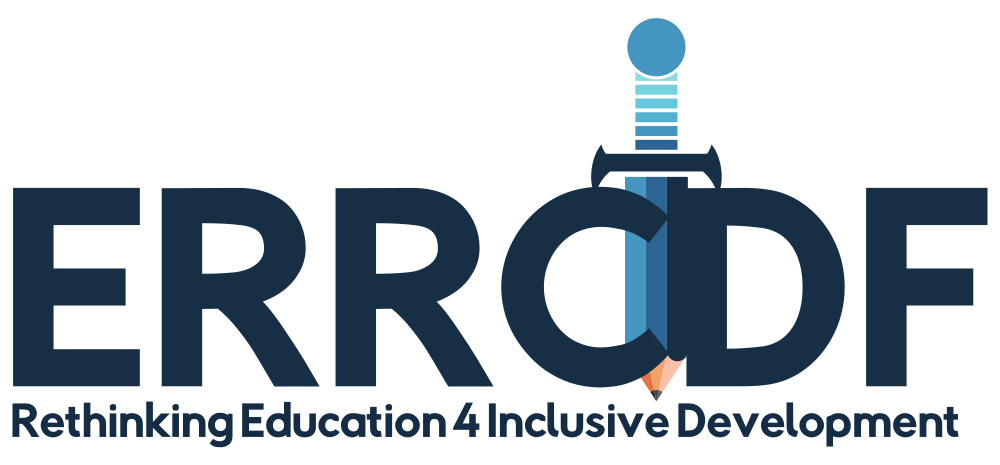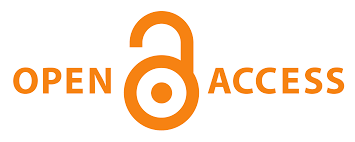Investigating illocutionary acts in video podcasts and its pedagogical implication in EFL teaching
DOI:
https://doi.org/10.38140/ijer-2023.vol5.05Keywords:
EFL Teaching, illocutionary acts, meaning , implication, video podcasts.Abstract
This study belongs to qualitative- content analysis focusing on the illocutionary speech acts in video podcasts of Najwa Shihab. Data were collected from her interview with one of the invited guests which were subsequently coded and categorized into illocutionary types: representative, directive, commissive, and expressive. To know the distribution of each type, the frequency and percentage were counted simultaneously. The results of the analysis revealed that directive acts were the most frequently used and followed by representative, commissive, and expressive acts. These findings are of benefit to have a comprehensive understanding of the speech acts productions employed by Najwa Shihab in her video podcasts. In addition, the findings provide constructive dynamic strategies in communication and pedagogical implication in language teaching.
References
Austin, J. L. (1962). How to do things with words. Oxford University Press.
Blum-Kulka, S., & Olshtain, E. (1984). Requests and apologies: A cross-cultural study of speech act realization patterns (CCSARP). Applied Linguistics, 5, 196–214. https://doi.org/10.1093/applin/5.3.196
Brasdefer, J.C.F & Cohen, A. D. (2012). teaching pragmatics in the foreign language classroom: Grammar as a communicative resource. Hispania, 95(4), 650–669. https://www.jstor.org/stable/41756418
Budiasih, L. T. (2019). Illocution on speech acts of foreign students in Indonesian learning. Diglossia: Jurnal Kajian Ilmiah Kebahasaan dan Kesusastraan, 10(2), 117-130. https://doi.org/10.26594/diglossia.v10i2.904
Carr, C. T., Schrock, D. B., & Dauterman, P. (2012). Speech acts within facebook status messages. Journal of Language and Social Psychology, 31(2), 176–196. https://doi.org/10.1177/0261927X12438535
Christison, M. (2018). Speech act theory and teaching speaking. The TESOL Encyclopedia of English Language Teaching, 1–6. https://doi.org/10.1002/9781118784235.eelt0712
Cohen, A. D., & Olshtain, E. (1983). The production of speech acts by EFL learners. Tesol Quarterly, 27(1), 33–56. https://doi.org/10.2307/3586840
Darong, H. C. (2022). What does Systemic Functional Linguistics say about speech? A discourse-semantic analysis. World of Media, Journal of Russian Media and Journalism Studies, 4, 46–67. https://doi.org/10.30547/worldofmedia.4.2022.3
Darong, H. C., Kadarisman, A. E., & Basthomi, Y. (2020). Politeness markers in teachers’ request in classroom interactions. Nobel, Journal of Literature and Language Teaching, 11(2), 217–233. https://doi.org/10.15642/NOBEL.2020
Darong, H. C., Niman, E. M., Su, Y. R., & Fatmawati. (2021). Pragmatic function of questioning act in EFL classroom interaction. In : 1st ICEHHA (pp. 1–16). Ruteng: EUDL (European Digital Library). https://doi.org/10.4108/eai.3-6-2021.2310650
Derin, T., Nursafira, M. S., Yudar, R. S., Gowasa, N. S., & Hamuddin, B. (2020). Persuasive communication: What do existing literature tells us about persuasive communication among students? The Journal of Ultimate Research and Trends in Education, 2(1), 12–18. https://journal.unilak.ac.id/index.php/UTAMAX/
Dresner, E., & Herring, S. C. (2010). Functions of the Nonverbal in CMC: Emoticons and illocutionary force. Communication Theory, 20(3), 249–268. https://doi.org/10.1111/j.1468-2885.2010.01362.x
Drew, C. (2017). Educational podcasts?: A genre analysis. E-Learning and Digital Media, 14(4), 201–211. https://doi.org/10.1177/2042753017736177
Eshghinejad, S., & Moini, M.R. (2016). Politeness strategies used in text messaging: Pragmatic commpetence in asymmetrical power relation of teacher-student. Sage Open, 1-13. https://doi.org/10.1177/2158244016632288
Fitriani, R. S., Hidayati, R, P. P., & Budiarti, A. (2021). Pragmatic markers and events on social media in New Habit Era of COVID-19 outbreak. Linguistics and Culture Review, 5(S2), 1061–1071. https://doi.org/10.21744/lingcure.v5nS2.1698
Irwandika, G. (2021). A corpus study of commissive speech acts performed by USA presidential candidates. ELLITE Journal of English Language, Literature, and Teaching, 06(1), 21–30. https://doi.org/10.32528/ellite.v6i1.5062
Kasim, F., Sumarlam, Suwandi, S., & Rakhmawati, A. (2017). A cross-cultural and intercultural of indirectness speect act: The use of interference local language in academic discourse at Central of Sulawesi. International Journal of Pedagogy and Teacher Education, 1(2), 117–126. https://doi.org/http://dx.doi.org/10.20961/ijpte.v1i2.14534
Lang, J. (2018). I am not criticizing you” A constructionist analysis of an indirect speech act. Chinese Language and Discourse, 92, 184–208. https://doi.org/https://doi.org/10.1075/cld.00010.lan
Limberg, H. (2016). Teaching how to apologize: EFL textbooks and pragmatic input. Language Teaching Research, 20(6), 700–718. https://doi.org/10.1177/1362168815590695
Matsumoto, Y. (2012). Intercultural communication and pragmatics: The case of English and Japanese: Routledge.
Nguyen, D., Liakata, M., Dedeo, S., Eisenstein, J., Mimno, D., Tromble, R., & Winters, J. (2020). How we do things with words: Analyzing text as social and cultural data. Review, 3(August), 1–14. https://doi.org/10.3389/frai.2020.00062
Nicholas, A. (2015). A concept-based approach to teaching speech acts in the EFL classroom. ELT Journal Volume, 69(4), 383–394. https://doi.org/10.1093/elt/ccv034
Oktaviani, A. D., & Alam, O. S. N. (2022). Illocutionary speech acts and types of hate speech in comments on @ Indraakenz ’ s Twitter Account. In The Second International Conference on Communication, Language, Literature and Culture (Vol. 6, pp. 91–99). https://doi.org/10.20961/ijsascs.v6i1.69943
Putra, I. P. W. A., & Sedeng, I. N. (2022). Directive illocutionary acts found in the movies 21 and 22 Jump Street. Humanis: Journal of Arts and Humanities, 26(2), 180–187. https://doi.org/10.24843/JH.20 22.v26.i.02.p03
Ren, J., & Gao, X. (2012). Negative pragmatic transfer in chinese students’ complimentary speech acts. Psychological Reports, 110(1), 149–165. https://doi.org/10.2466/07.17.21.28.PR0.110.1.149-165
Renisyifa, A., Sunarti, S., & Pebriyanti, A. (2022). Podcast media credibility as a means of fulfilling public information. International Journal of Research and Applied Technology, 2(1), 226–232.
Rostiana, H., & Novari, A. F. (2021). A speech act analysis of an interview podcast between Siti Fadilah and Deddy Corbuzier on Youtube. MENDIDIK: Jurnal Kajian Pendidikan Dan Pengajaran, 7(2), 189–195. https://doi.org/10.30653/003.202172.187
Saleem, T., Anjum, U., & Tahir, S. (2021). The sociopragmatic and pragmalinguistic strategies in L2 pragmatic competence: A Case of Pakistani ESL Learners. Journal of Intercultural Communication Research, 50(2), 1–22. https://doi.org/10.1080/17475759.2021.1877176
Searle, J. (1969). Illocutionary acts. philosophy of language. Oxford University Press.
Siritman, B., & Meilantina, M. (2020). English speech acts of directives in class interaction. International Journal of Language Education and Cultural Review, 6(1), 1-8. https://doi.org/10.21009/IJLECR.061.01
Suryani, N. Y. (2022). Illocutionary analysis on code-switching used by the characters of “Layangan Putus” the TV series. SULE-IC, ASSEHR 731, 175–186. https://doi.org/10.2991/978-2-38476-010-7_21
Taguchi, N. (2012). Pragmatic development as a dynamic, complex process: General patterns and case histories. The Modern Language Journal, 95, iv, 605-627. https://doi.org/10.1111/j.1540-4781.2011.01246.x
Taguchi, N., & Kim, Y. (2014). Collaborative dialogue in learning pragmatics: Pragmatic-related episodes as an opportunity for learning request-making. Applied Linguistics, 37 (3), 416-437. https://doi.org/10.1093/applin/amu093
Taguchi, N., Xiao, F., & Li, S. (2016). Effects of intercultural competence and social contact on speech act production in a Chinese study abroad context. The Modern Language Journal, 100(4), 1–22. https://doi.org/10.1111/modl.12349
Tajeddin, Z., & Pezeshki, M. (2014). Acquisition of politeness markers in an EFL context: Impact of input enhancement and output tasks. RELC Journal, 45(3), 269–286. https://doi.org/10.1177/0033688214555357
Thuy, T., Nguyen, M., Hanh, T., & Tam, M. (2012). The relative effects of explicit and implicit form-focused instruction on the development of L2 pragmatic competence. Journal of Pragmatics, 44(4), 416–434. https://doi.org/10.1016/j.pragma.2012.01.003
Tromp, J., Hagoort, P., & Meyer, A. S. (2016). pupillometry reveals increased pupil size during indirect request comprehension. The Quarterly Journal of Experimental Psychology, 69(6), 1093–1108. https://doi.org/10.1080/17470218.2015.1065282
Vedula, N., Sun, W., Lee, H., Gupta, H., Ogihara, M., Johnson, J., Parthasarathy, S. (2017). Multimodal content analysis for effective advertisements on YouTube. In International Conference on Data Mining Multimodal (pp. 1123–1128). Computer Society. https://doi.org/10.1109/ICDM.2017.149
Yazdanfar, S., & Bonyadi, A. (2016). Request strategies in everyday interactions of Persian and English speakers. SAGE Open,:1–11. https://doi.org/10.1177/2158244016679473
Zhu, W. (2012). Polite requestive strategies in emails: An investigation of pragmatic competence of Chinese EFL learners. RELC Journal, 43(2), 217–238. https://doi.org/10.1177/0033688212449936
Downloads
Published
How to Cite
Issue
Section
License
Copyright (c) 2023 Hieronimus Canggung Darong, Skolastika Neldis

This work is licensed under a Creative Commons Attribution-NonCommercial-NoDerivatives 4.0 International License.










